The nights are drawing in and there's a chill in the air! It's time to snuggle up under your kotatsu and get stuck into this season's best Japanese learning resources — tried, tested and approved by the Tofugu team. Enjoy!
- 日本語 to 旅 〜Nihongo to Tabi〜
- けんと レイディオ Channel
- Japanese–English Translation: An Advanced Guide
- Ainu Mosir
- Japanese Swotter
- Japanese In-Law: Words and Phrases for Day-to-Day Living
- おやすみすとーりー / Oyasumi Story
- Refold
- Japanese with Teppei and Noriko
- Fuji Family / バイリンガルファミリー
- Japan Reader
- Watercolor by Shibasaki
- 日本語NOW! NihonGO NOW!: Performing Japanese Culture
- Konnichi What's Up
- The Real Japanese Podcast
- Lorenzi's Jisho
日本語 to 旅 〜Nihongo to Tabi〜
Nihongo to Tabi is a relatively new YouTube channel, launched back in January of this year. The host and creator of the channel, who is unnamed, didn't really start publishing videos at warp speed until May though. As this is being written, he's currently up to 167 uploads! That's quite the output for such a short time frame — at some points, he was even uploading every few days.
It's a great way to learn new concepts while practicing listening and reading at the same time
Though some videos are based on themes like karaoke or vehicles, the real draw is the grammar points, covering JLPT N4–N1 grammar. The host teaches each point in Japanese only, making this an excellent opportunity to listen and learn at the same time. He speaks slowly enough, adjusting the complexity of his Japanese by level, and repeats key words and phrases often. Besides the listening practice, there is plenty of text on the screen to test your reading ability too — a good reason to watch a video on a new concept several times. To top it all off, there is consistency in style and structure, so as you progress through or jump around, you can expect the same teaching and visual style throughout.
Right now, many of the videos are divided into chapters: explanation, form, examples, practice, and homework (with perhaps a few chapters added or removed). Unfortunately, the older uploads don't have this handy navigation feature, but hopefully it will be added soon.
Japanese learners at the N5 level and above will benefit the most from this channel. It's a great way to learn new concepts while practicing listening and reading at the same time. And at the rate our host is uploading, we should have many more videos to look forward to.
けんと レイディオ Channel
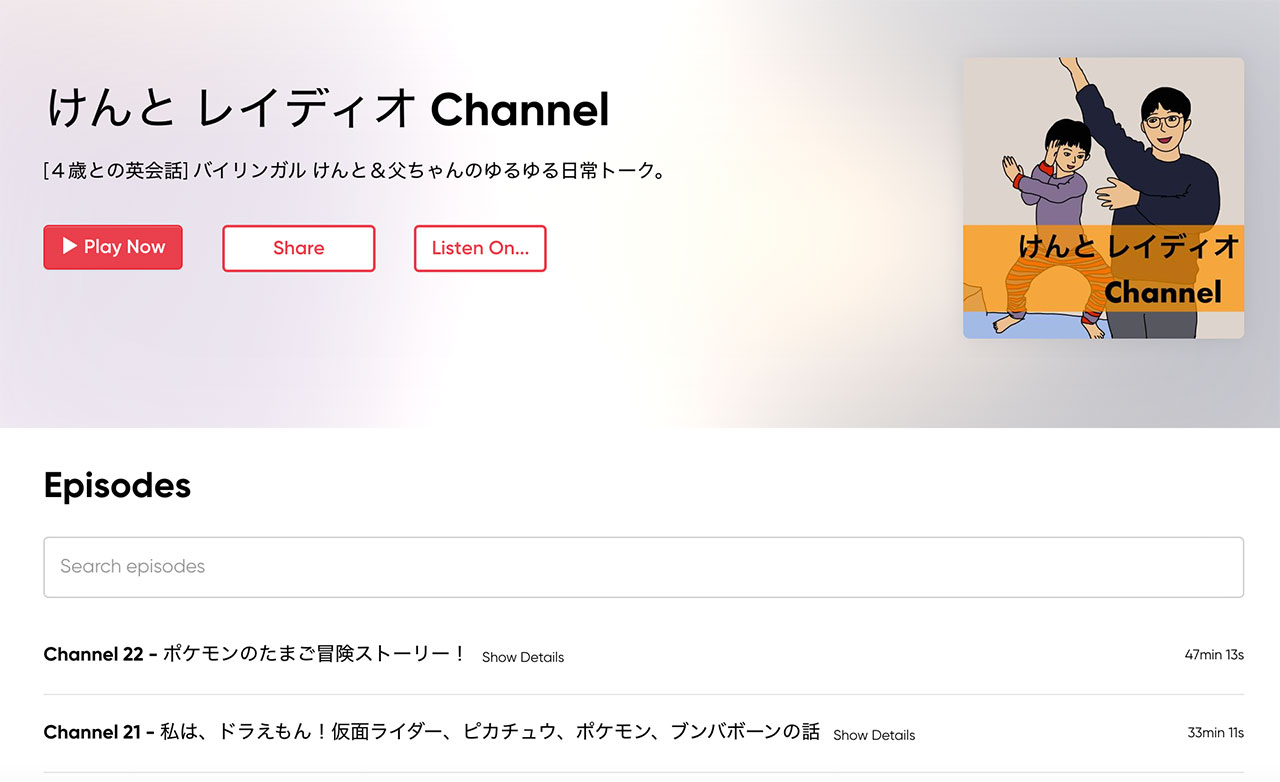
Don’t you just love the cute things kids say? We do too. We especially enjoy the bilingual conversations 4-year-old Kento and his father have in “けんと レイディオ Channel.” This translates to "Kento's Radio Channel." If you’ve ever wondered how Japanese kids talk outside of scripted shows or movies, you can listen to the authentic dialogue of young Kento and his dad.
In this podcast, the pair discuss a variety of topics related to learning English, current events, and things that children find interesting. The podcast is mostly in Japanese but there are some parts where the two talk in English as well. They joke around a lot, and overall, it’s a charming and imaginative listen. You’ll be sure to bring out the inner child in you by tuning in.
Japanese–English Translation: An Advanced Guide
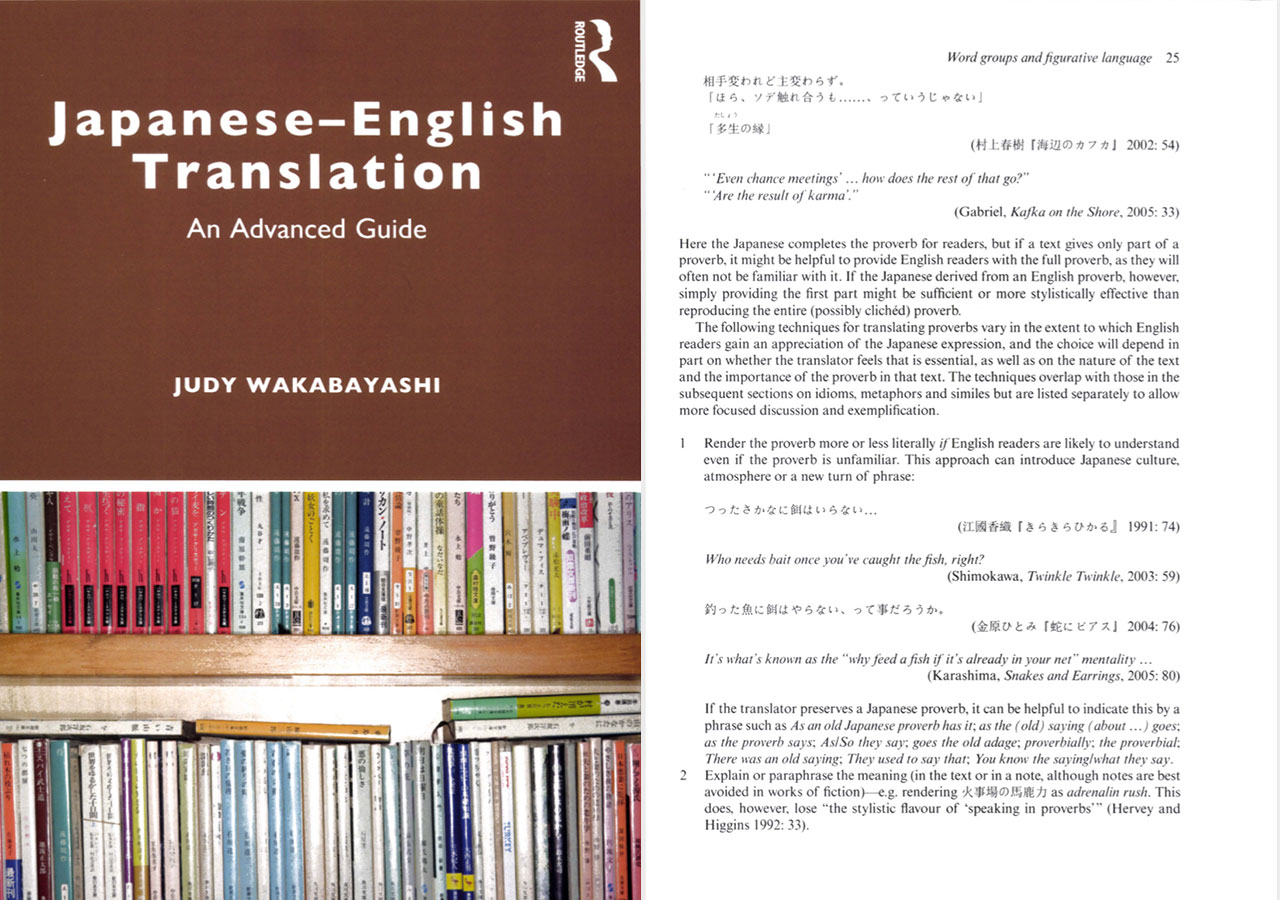
A perfect guide for aspiring, never-been-formally-trained, or even already-professional translators of Japanese to English! It was created as material for an introductory translation program at a university and was later made available for more people who are interested in the world of Japanese-English translation. It's most-suitably for English speakers with Japanese proficienty of JLPT N2 or N1 level.
The guide consists of 13 chapters on different topics and concepts (many of which are unique to Japanese-English, such as keigo, gairaigo and wasei eigo. Each chapter is filled with in-depth explanations of key techniques along with examples (both from original Japanese text and English translation) and exercises. Japanese can be a hard language to translate, but this book might make it feel less overwhelming!
Ainu Mosir
If you’ve ever spent time in Hokkaido or have read about the island before, you’ll likely know about the Ainu people. The Ainu are an indigenous group of people from Hokkaido. In the Ainu language, Hokkaido is known as “Ainu Mosir.” This name is given to the title of the film, which is set in the town Ainu Kotan by Lake Akan.
In the film, a 14-year-old boy named Kanto is struggling with his identity. For Kanto, his life has always been surrounded by Ainu culture. Now, after losing his father and readying himself for a school transition, he is beginning to feel more of a disconnect to his hometown. Throughout the film, Kanto’s beliefs of family, culture, and tradition are tested and they end up growing in new ways.
This film highlights an aspect of Japanese culture that is often untold by traditional narratives. Viewers get a short yet sweet glimpse into the lives of Ainu people. Take a look at this film if you're interested in learning more about Ainu stories, or if you'd like to enjoy some scenic views of Eastern Hokkaido.
Japanese Swotter

Have you ever wished you could practice listening and speaking while you're on a walk, cooking or doing other things? If so, Japanese Swotter might have some of the content you've been looking for.
Japanese Swotter provides material called "Japanese SPEAKING DRILL," which spans different levels (from beginner to intermediate) and lets you practice speaking. Each drill features a specific grammar point or an expression and you get to listen to short example sentences. After listening, you can either repeat or conjugate what you hear. There's also a series of advanced listening materials called "Yonaka no Hitorigoto (Night Soliloquy)" designed for bedtime listening. The host, Yoko, has a very soothing voice, which is perfect to listen to before falling asleep.
Japanese In-Law: Words and Phrases for Day-to-Day Living
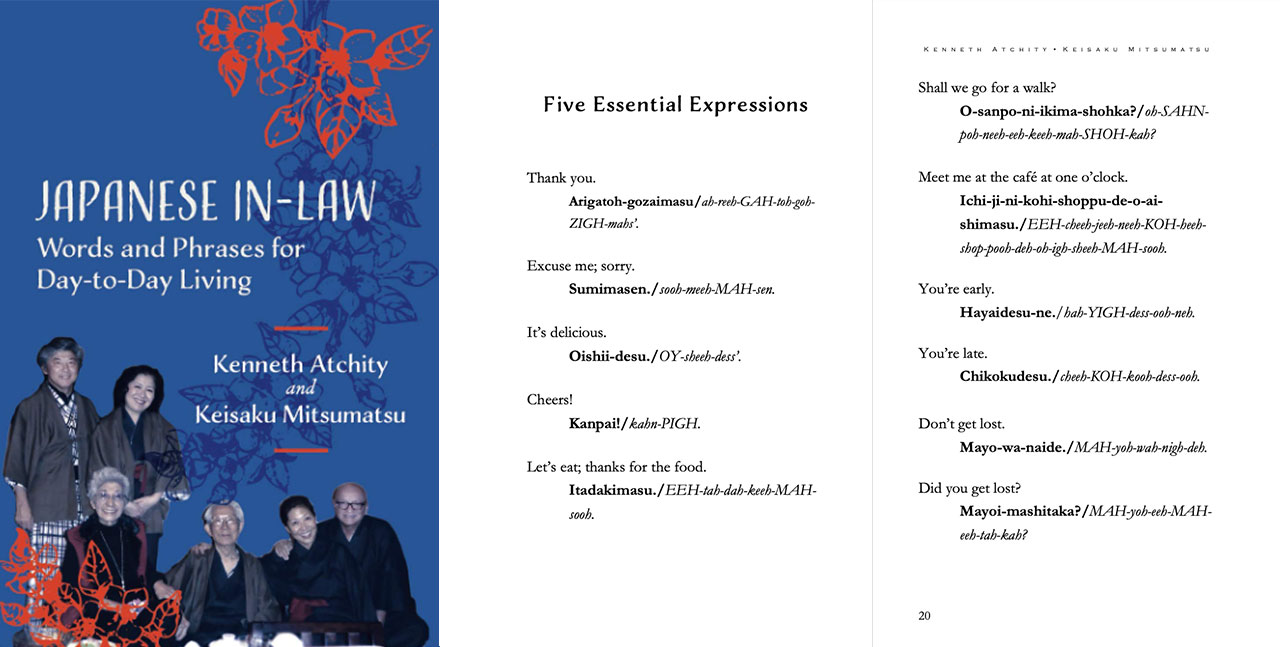
Are you in a situation where you don't know much Japanese, but have a need to communicate with your Japanese in-laws? If so, this pocketbook, written by an American son-in-law and his Japanese father-in-law, may be for you. It's intended help someone in a similar situation learn daily Japanese phrases that they would find useful while communicating with their Japanese family. There are lots of resources out there for tourists learning Japanese, but there are not many resources specifically designed for communicating with your Japanese in-laws.
All the phrases are written in romaji as well as English letters to show the pronunciation, like "Arigatoh-gozaimasu / ah-reeh-GAH-toh-goh-ZIGH-mahs." While it could be distracting for those who already know how to read romaji or hiragana and katakana, if you are an absolute beginner and are only hoping to learn words and phrases to get by with verbal communication at home, this book might be worth checking out.
おやすみすとーりー / Oyasumi Story
Get a good night's sleep and practice your Japanese listening at the same time! Oyasumi Story is a podcast channel that a Toronto-based Japanese theater artist, Emi Yasuo, started. She wanted to help children and their parents have a relaxing moment before falling asleep. The content is children's book-style storytelling mixed with soothing music and breathing exercise.
If you are raising your children as a Japanese speaker, this is a perfect resource to enjoy for both you and your little ones. Transcriptions and translations are not available at the moment, since this is intended for Japanese children, but the slow tempo and clear pronunciation are great for beginners as well.
Refold

One of the hardest parts about learning a new language is knowing what to study, when…and how! Add in personal learning style, and figuring out this roadmap for yourself is downright daunting. This is where the website Refold wants to help. It's a language-learning roadmap comprised of methods, mindsets, and core activities.
Though not specific to Japanese, Refold aims to help you learn your target language through immersion, listening, and active study. The goal is acquisition — meaning you can comprehend and reproduce the target language effortlessly, as you do with your native language. This is a big promise, and one that usually makes us skeptical. But in this case, they emphasize putting in the work, which we know is the pathway to success.
The goal is acquisition — meaning you can comprehend and reproduce the target language effortlessly, as you do with your native language.
A nice aspect of the writing in this roadmap is the focus on positivity — things like learning to enjoy the language itself, gaining a positive view of mistakes, and understanding how your brain works. Ideas like this aren't the concrete building blocks that get you to the finish line (Refold does cover that too), but they help to keep you from burning out or quitting. You can't put in the work if negativity drives you away from learning altogether.
When it comes to practical methods for immersion and study, Refold gives introductions to effective methods like SRS, passive listening, and choosing the right content. We've written about or endorsed a lot of these things ourselves, so we know Refold is pushing some effective strategies.
At the moment, the roadmap is incomplete. Stage 3: "Learn to Speak" and Stage 4: "Refine to Mastery" are "coming soon" according to the website, and we hope that they are. In the meantime, there is plenty to keep you busy.
Update: Refold has added Stage 3: "Learn to Speak"!
It should be noted that for Japanese learners, this roadmap does not take into account specific hurdles like kanji, which may rearrange or add some steps to your roadmap. The end of Refold's Stage 2 talks about adding reading to your regimen, which isn't an easy task if you haven't been studying kanji up to that point.
We have our own roadmap here at Tofugu, which is Japanese specific, but if you compare the two, we think you'll find they agree in many ways. Taking in both (and hopefully even more), you'll learn about learning to the point that your personal roadmap becomes extra effective — because it's tailor-made for you!
Japanese with Teppei and Noriko
If you’ve looked into podcasts for Japanese language learners before, you’re probably familiar with both Teppei and Noriko sensei. But did you know they have a collaborative podcast? Well, they do, and it lives up to the quality you’d expect from this pair of veteran podcasters.
As you might expect, this podcast is very similar to their solo work, featuring a variety of topics. However, with the both of them they discuss these topics at more or less natural speed, making this podcast more suited for intermediate learners rather than beginners.
Like some similar podcasts, it’s a great option for those struggling to comprehend native conversations, though it probably shouldn’t be your first practice in this field.
Fuji Family / バイリンガルファミリー

Fuji Family/バイリンガルファミリー (bilingual family) is a YouTube channel which features a family of three traveling around different parts of Japan. Although you likely can’t travel anywhere far for the time being, you can still have some virtual travel experiences with the Fuji Family.
In this family, the mother is from Ireland and the father is Japanese. Both parents know Japanese and English and talk to their bilingual son, Sean, in both languages during the segments.
The videos have a very natural and comforting element to them. The camera, held by the father, follows the mother and son around while they do various sightseeing activities. Videos on their channel are released pretty frequently, about once a week. The videos include both English and Japanese subtitles. If you're looking for a slower-paced, calming resource, you'll want to check this channel out.
Japan Reader
Let's face it — reading Japanese is hard. Perhaps the most common complaint we hear from intermediate Japanese learners is that they can decode a text, but they can't really just sit down and read it. To build up reading fluency, it's important to avoid stopping to look up unknown words as you go, because you need to develop reading skills like guessing words from context and making inferences about the meaning of sentences. This is easier said than done though — it's just so tempting to look up those mystery words as they pop up!
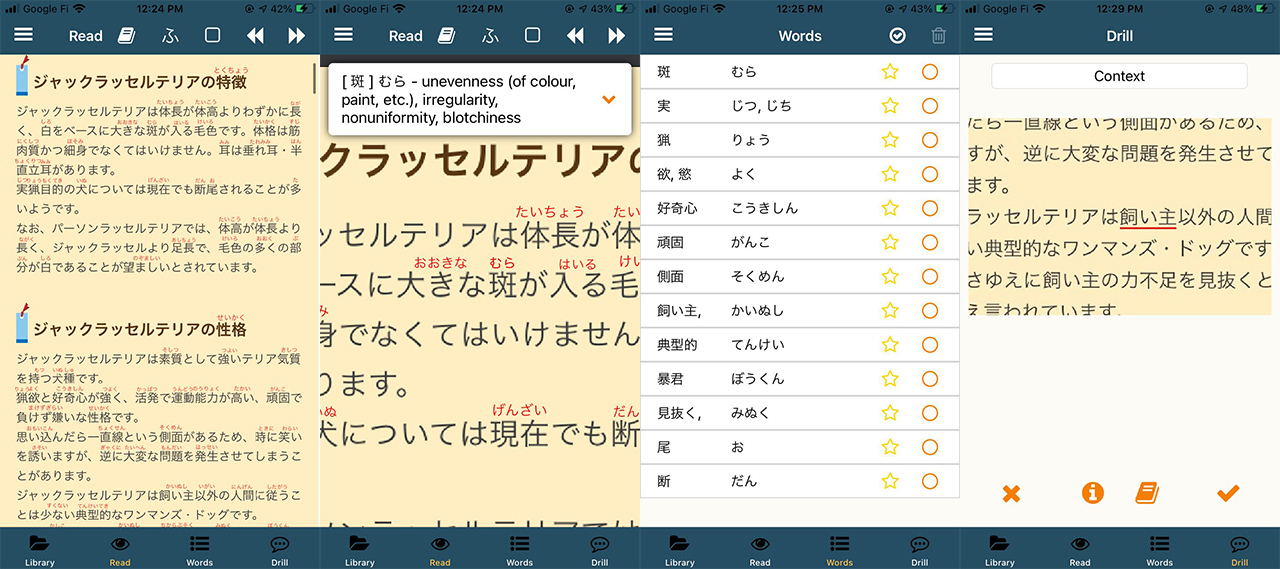
This is where Japan Reader comes in. Just take a screenshot of the text you're reading on your phone or tablet and upload it to your in-app library. Then, you can interact with the text as you read it, without having to flip to your browswer or another app to look up words. Click the 「ふ」 button at the top of the screen to display furigana above all kanji in the text. Next to that, you'll see a small square button — this allows you to add red boxes around words and grammatical elements, helping you see the structure of sentences more transparently. Finally, if you click the book icon at the top, an on-page dictionary will appear, displaying the meaning of specific words that you tap. Words that you look up are automatically added to a vocabulary list under the "Words" button at the bottom of the screen. The "Drill" function creates flashcards that show each word in the context, which will help you to learn not only the word's meaning but to see how it functions grammatically in a sentence.
This is one of those apps that makes me realize just how far we've come with technology. I definitely dreamed of an app like this when I first started learning Japanese, and even now I plan to use it to read web articles! A few quick caveats and notes — if your phone is set to "dark mode", certain features like the dictionary and vocabulary drilling function might not work properly (mine didn't). Also, it appears that there is a limit to the number of free texts you can add to your library, so be prepared to pay if you really like the app.
Watercolor by Shibasaki
If you've always wanted to learn to paint while brushing up your Japanese (pun intended), this YouTube channel is for you! As its name implies, the channel is run by a watercolor artist by the name of Harumichi Shibasaki, who would like to be your art teacher 🎨
Shibasaki-sensei has a lovely, soft speaking style and radiates good energy. There is an impressive range of videos available, most of them between five and fifteen minutes long, and they'll teach you how to draw people, animals, and landscapes, using watercolors, acrylics, crayons, and pencils.
Many of the videos have English subtitles, so they are accessible even for beginners, but this channel makes for a better learning resource for upper intermediate to advanced learners. Some of the videos have Japanese subtitles, but without furigana, and the speaking is at a natural speed with fairly advanced language use. So if you're upper intermediate level or above in Japanese, leave off those English subtiles and practice your Japanese while learning a new skill!
日本語NOW! NihonGO NOW!: Performing Japanese Culture
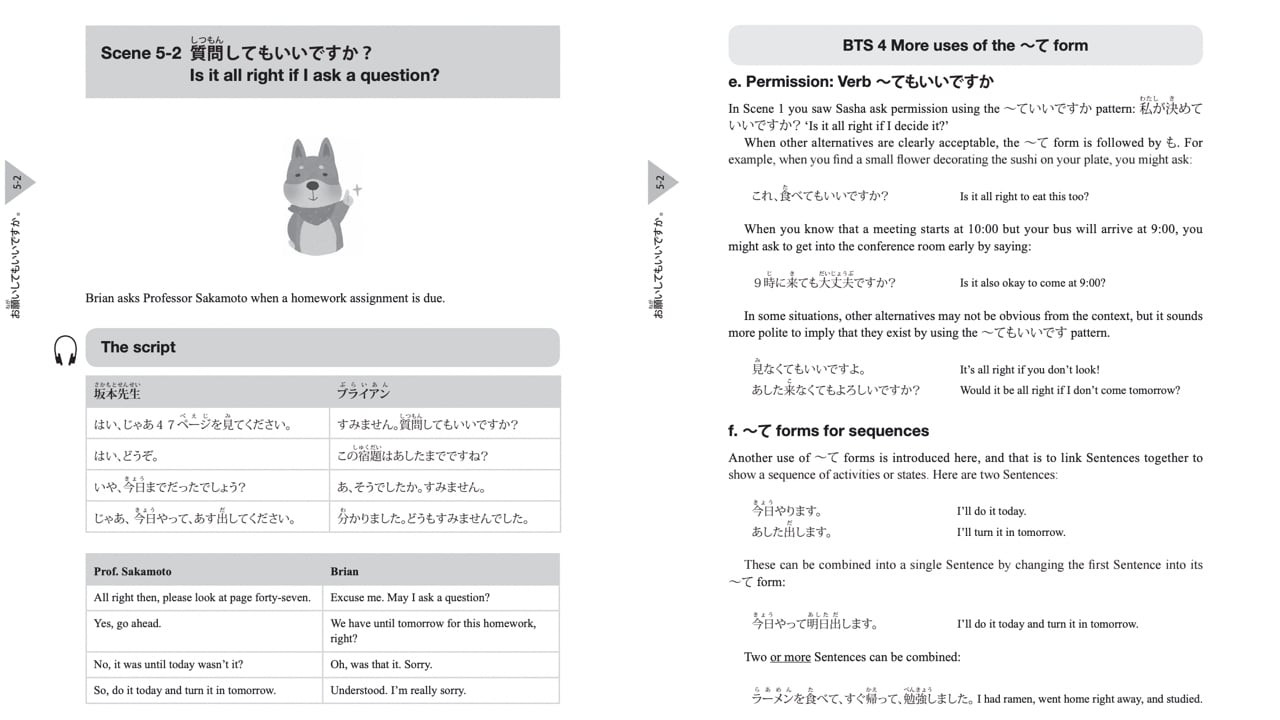
The idea behind this new series of textbooks and their accompanying activity books is to learn and practice Japanese in a way that will help you to participate in Japanese life from more or less the first page. They do this by selecting immediately-applicable, widely-used language, and putting that language in context by teaching the dialogues along with their cultural background, plus other, nonverbal aspects of communication. Written by an impressive team of six university professors, the material is based around authentic everyday scenarios that you're sure to encounter sooner rather than later if you travel to or live in Japan.
this series is a quality, in-depth resource that gives well-rounded insight into of Japanese language and culture.
In all there are four textbooks, taking you up to intermediate level. Each book is divided into learning units called "acts" ( 幕). In each act, there are around six scenes ( 場) focusing on listening and speaking skills, and two to three scenes that teach reading and writing skills. With additional online resources, including audio files and a teacher's manual, this book is good for both self learners, and teachers of Japanese.
The main drawback of this series is its high price tag, and since it's brand new there's not much chance of picking up secondhand copies just yet. Its academic style might also feel too dry for some learners. Those points aside, this series is a quality, in-depth resource that gives well-rounded insight into of Japanese language and culture.
Konnichi What's Up
This YouTube channel has been around for a few months now, and new videos are added twice a week, meaning there's already quite a variety to choose from. Made by students in global communications at Doshisha University in Kyoto, the channel covers a range of topics that are interesting for Japanese learners. These include explanations of how to use words in context, especially common slang, such as やばい. The explanations are clear and helpful and come with lots of context sentences, so they really help you to get a feel for the range of meanings of the words presented.
There are also videos about Japanese dialects, everyday conversation, and Japanese study topics. You can even watch the hosts order at McDonald's, and play the "no katakana" game. This last one is an interesting exercise in just how hard it is to avoid using katakana words in Japanese conversation these days!
The speaking is at a natural pace, all the presenters enunciate clearly, and there are Japanese subtitles with furigana added to all but the most basic kanji. All this makes Konnichi What's Up an accessible resource for lower intermediate learners and above. The sound quality isn't always top notch, but this is still a great source of natural, colloquial Japanese, presented in a fun and engaging way.
The Real Japanese Podcast
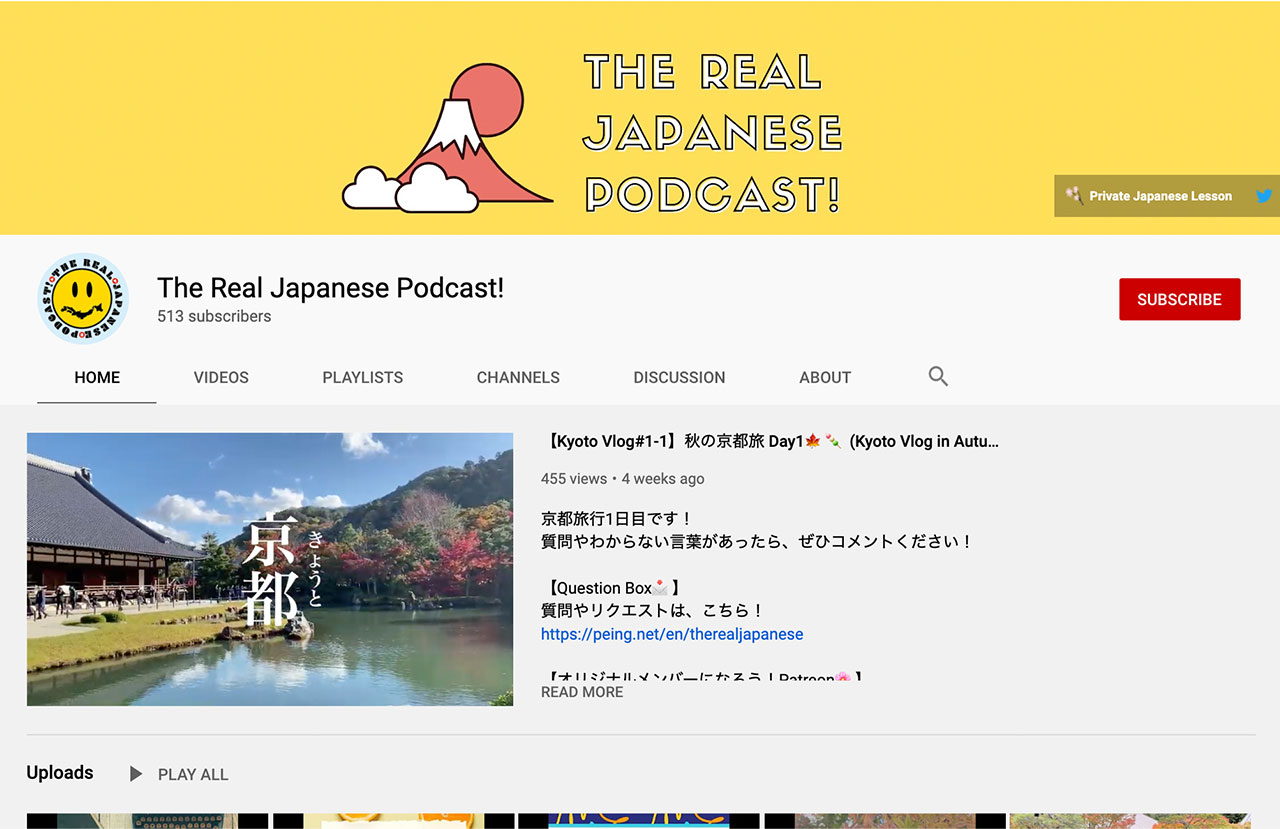
The Real Japanese Podcast, launched in 2020, is a monologue-style podcast hosted by Japanese teacher Haruka. The podcasts tend to mirror videos from her YouTube channel, where she spends time speaking unscripted on a certain topic. Despite this, transcripts are available should you want to check your comprehension, or read along.
While the format is similar to other monologue-style podcasts, Haruka’s natural speed and unscripted speech make this podcast well worth your time. She talks about events from her life, such as time spent abroad in Canada, personal takes on social issues, as well as general interest topics on Japan and Japanese culture. This more personal touch makes The Real Japanese Podcast feel more tailor-made rather than how other series can feel scattershot at times, and keeps the conversation engaging even if you’re not well versed on the topic.
Finally, her natural speech makes this a great listen for intermediate Japanese learners. With so much of a focus on beginner-level materials, it can be hard to find something that’s well suited for intermediate learners, but The Real Japanese Podcast definitely fits the bill.
Lorenzi's Jisho
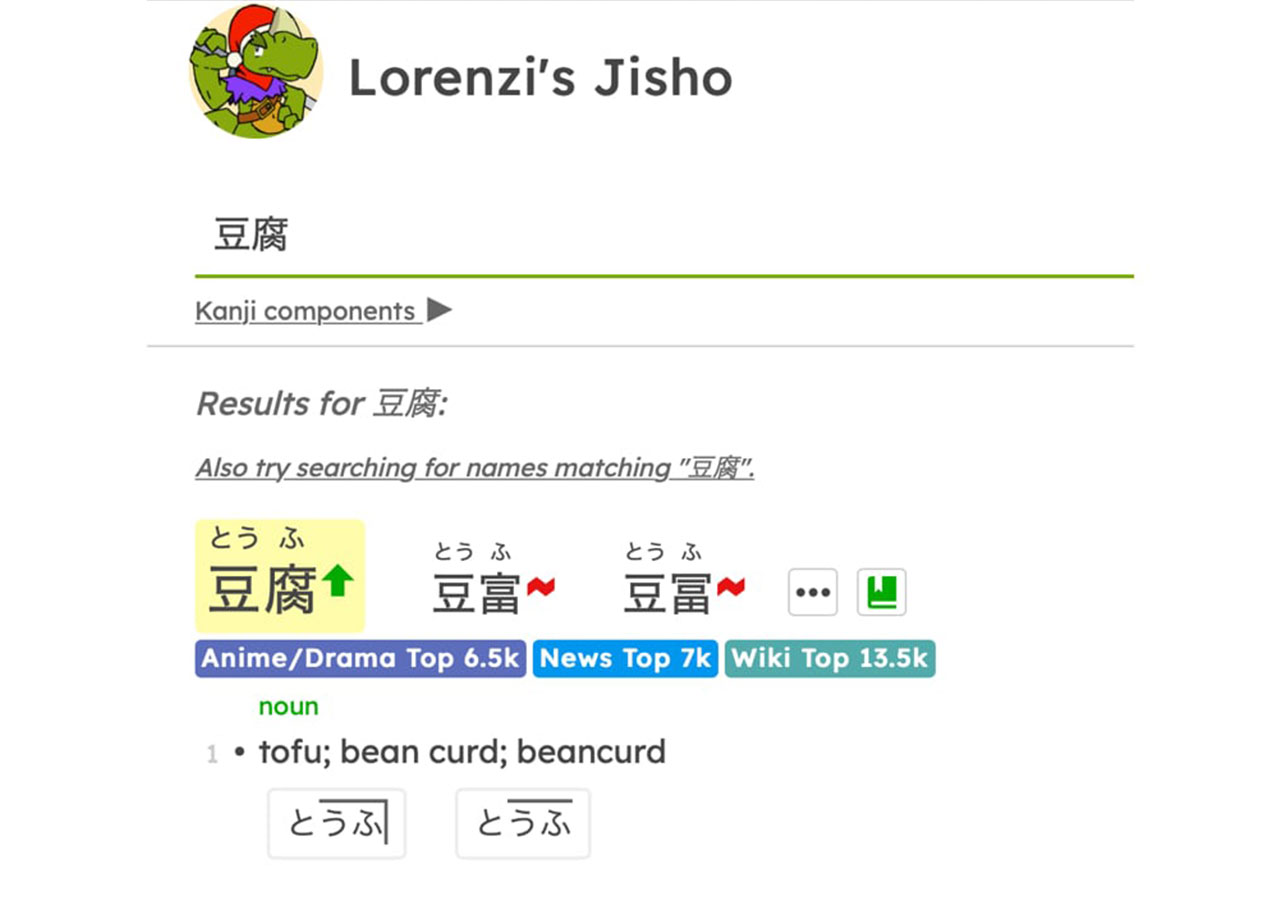
Lorenzi's Jisho is a new Japanese learners' dictionary based on JMDict, the Japanese-Multilingual Dictionary File that many other Japanese-English dictionaries, including the mighty Jisho, are based on. Lorenzi's Jisho has many similar functions to Jisho, such as an extensive range of lookup options, including English, Japanese, romaji, kanji, and many more.
Lorenzi's Jisho also has some handy bonus features, like pitch accent information and a very detailed kanji information page. It even displays statistics that give you an idea of how common words and kanji are in Japanese anime, drama, and news sources. If you create an account, you can create word lists to study from. Members of the community also post their own study lists, which you can export into anki to review at your leisure.
We hope you found something to suit your fancy among this season's fare! If you come across an outstanding Japanese learning resource that we haven't covered yet, please let us know at hello@tofugu.com or on Twitter @tofugu. We're always on the lookout for quality resources. Until then, stay snug, and we'll look forward to seeing you for the spring edition.
